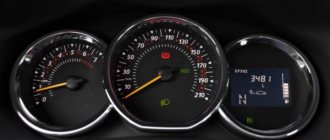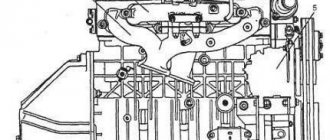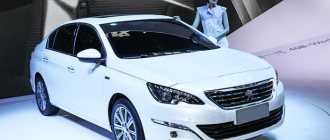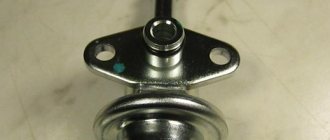Peugeot 308 is a hatchback class produced by the French auto company Peugeot. The start of production is considered to be 2007. Today there are many modifications, among which five-door hatchbacks and two-door convertibles are the leaders in price on the CIS market. Find out the fuel consumption of the Peugeot 308 per 100 km before buying such a car in order to have an idea about your future purchase.
Technical information
This model has cars with front-wheel drive and all-wheel drive, equipped with a gasoline or diesel engine of different sizes and powers, respectively. Another technical characteristic of Peugeot includes different variations of both manual and automatic transmissions.
| Engine | Consumption (highway) | Consumption (city) | Consumption (mixed cycle) |
| 1.2 VTi (petrol) 5-mech, 2WD | 4.2 l/100 | 6.3 l/100 | 5 l/100 |
| 1.6 VTi (petrol) 5-mech, 2WD | 5.3 l/100 | 9.1 l/100 | 6.6 l/100 |
| 1.6 VTI (petrol) 6-mech, 2WD | 4.4 l/100 | 7.7 l/100 | 5.6 l/100 |
| 1.6 THP (petrol) 6-auto, 2WD | 5.2 l/100 | 8.8 l/100 | 6.5 l/100 |
| 1.6 HDi (diesel) 5-mech, 2WD | 3.3 l/100 | 4.3 l/100 | 3.6 l/100 |
| 1.6 e-HDi (diesel) 6-automatic, 2WD | 3.3 l/100 | 4.2 l/100 | 3.7 l/100 |
| 1.6 BlueHDi (diesel) 6-auto, 2WD | 3.4 l/100 | 4.1 l/100 | 3.6 l/100 |
The maximum speed that the model develops is 188 km/h, and acceleration to 100 km is carried out in 13 seconds. Having such indicators, fuel costs for the Peugeot 308 should be relatively acceptable.
Russia
Fuel consumption Peugeot 308 restyling 2021, hatchback 5 doors, 2nd generation, T9
| Engine capacity | Power | Transmission | Drive unit | Fuel | Consumption |
| 1.6 l | 150 hp | Automatic transmission | front-wheel drive | Petrol | 6,5 |
| 1.6 l | 135 hp | Automatic transmission | front-wheel drive | Petrol | 6,5 |
Fuel consumption Peugeot 308 2014, hatchback 5 doors, 2nd generation, T9
| Engine capacity | Power | Transmission | Drive unit | Fuel | Consumption |
| 1.6 l | 135 hp | Automatic transmission | front-wheel drive | Gasoline AI-95 | 6,5 |
| 1.6 l | 150 hp | Automatic transmission | front-wheel drive | Gasoline AI-95 | 6,5 |
| 1.6 l | 115 hp | Manual transmission | front-wheel drive | Gasoline AI-95 | 6,6 |
Fuel consumption Peugeot 308 restyling 2011, station wagon, 1st generation, T7
| Engine capacity | Power | Transmission | Drive unit | Fuel | Consumption |
| 1.6 l | 92 hp | Manual transmission | front-wheel drive | Diesel fuel | 4,5 |
| 1.6 l | 120 hp | Manual transmission | front-wheel drive | Petrol | 7,1 |
| 1.6 l | 150 hp | Automatic transmission | front-wheel drive | Petrol | 7,5 |
| 1.6 l | 120 hp | Automatic transmission | front-wheel drive | Petrol | 7,7 |
Fuel consumption Peugeot 308 restyling 2011, open body, 1st generation, T7
| Engine capacity | Power | Transmission | Drive unit | Fuel | Consumption |
| 1.6 l | 150 hp | Automatic transmission | front-wheel drive | Gasoline AI-95 | 7,7 |
Fuel consumption Peugeot 308 restyling 2011, hatchback 5 doors, 1st generation, T7
| Engine capacity | Power | Transmission | Drive unit | Fuel | Consumption |
| 1.6 l | 112 hp | Automatic transmission | front-wheel drive | Diesel fuel | 4,2 |
| 1.6 l | 115 hp | Manual transmission | front-wheel drive | Diesel fuel | 4,6 |
| 1.6 l | 120 hp | Manual transmission | front-wheel drive | Gasoline AI-95 | 6,4 |
| 1.6 l | 120 hp | Automatic transmission | front-wheel drive | Gasoline AI-95 | 6,9 |
| 1.6 l | 120 hp | Automatic transmission | front-wheel drive | Gasoline AI-95 | 7,3 |
| 1.6 l | 150 hp | Automatic transmission | front-wheel drive | Gasoline AI-95 | 7,8 |
Fuel consumption Peugeot 308 2009, open body, 1st generation, T7
| Engine capacity | Power | Transmission | Drive unit | Fuel | Consumption |
| 1.6 l | 150 hp | Manual transmission | front-wheel drive | Petrol | 7,2 |
| 1.6 l | 140 hp | Automatic transmission | front-wheel drive | Petrol | 7,9 |
Fuel consumption Peugeot 308 2007, station wagon, 1st generation, T7
| Engine capacity | Power | Transmission | Drive unit | Fuel | Consumption |
| 1.6 l | 109 hp | Manual transmission | front-wheel drive | Diesel fuel | 5,3 |
| 2.0 l | 136 hp | Manual transmission | front-wheel drive | Diesel fuel | 5,9 |
| 2.0 l | 136 hp | Automatic transmission | front-wheel drive | Diesel fuel | 7,1 |
| 1.6 l | 120 hp | Manual transmission | front-wheel drive | Petrol | 7,1 |
| 1.6 l | 150 hp | Manual transmission | front-wheel drive | Petrol | 7,5 |
| 1.6 l | 120 hp | Automatic transmission | front-wheel drive | Petrol | 7,7 |
| 1.6 l | 140 hp | Automatic transmission | front-wheel drive | Petrol | 8,2 |
Fuel consumption Peugeot 308 2007, hatchback 5 doors, 1st generation, T7
| Engine capacity | Power | Transmission | Drive unit | Fuel | Consumption |
| 1.6 l | 109 hp | Manual transmission | front-wheel drive | Diesel fuel | 4,9 |
| 2.0 l | 136 hp | Automatic transmission | front-wheel drive | Diesel fuel | 6,8 |
| 1.6 l | 120 hp | Manual transmission | front-wheel drive | Petrol | 7,1 |
| 2.0 l | 136 hp | Manual transmission | front-wheel drive | Diesel fuel | 7,2 |
| 1.6 l | 150 hp | Manual transmission | front-wheel drive | Petrol | 7,2 |
| 1.6 l | 120 hp | Automatic transmission | front-wheel drive | Petrol | 7,7 |
| 1.6 l | 140 hp | Automatic transmission | front-wheel drive | Petrol | 7,9 |
This is interesting: Renault Duster configurations: technical specifications
Fuel consumption
All Peugeot 308 models are equipped with two types of engines
: 2.0 liter diesel and 1.6 liter petrol carburetor. Power is respectively 120 and 160 horsepower.
Engine costs 1.6
Such models reach a maximum speed of 188 km/h, and acceleration to 100 km is carried out in 13 seconds. With these figures, the average fuel consumption for a Peugeot 308 in the city is 10 liters, on the highway about 7.3 liters, and in the combined cycle - 9.5 liters per 100 km
.
This information applies to gasoline engine models. Regarding the real numbers, they are slightly different. In particular, fuel consumption in the extra-urban cycle is 8 liters, in the urban cycle about 11 liters per 100 km.
Models with a diesel engine show slightly different numbers. Fuel consumption in the city does not exceed 7 liters, in the combined cycle - about 6.2 liters, and in the suburban cycle - 5.1 liters. But, despite this, the actual fuel consumption of the Peugeot 308 slightly exceeds the manufacturer’s specified standards by an average of 1-2 liters in each cycle.
Peugeot is a heavy car
With a curb weight of up to 1.4 tonnes, fuel consumption cannot be low. Almost all owners of 308 hatchbacks have tested this statement for themselves.
Beautiful numbers on bookmakers
We measured the consumption both according to the BC and in the usual way, when the number of liters is divided by the distance:
- 1.6 turbo on “mechanics” - consumption 12.5 according to BC!
- In the city for automatic transmission - from 9 to 12 l/100 . Motor with very low mileage;
- During the run-in (automatic transmission + 1.6 turbo), the numbers decreased from 15.5/100 to 11.1-11.4 (city);
- In the city - 8.8 liters per hundred (“mechanics” + 120 hp);
- Automatic + 120 hp, on the highway – 7.5 l , in the city – 10 ;
- Automatic + 120 hp, mileage 3000, city consumption 13+ …
As you can see, the automatic transmission does not consume less than 10 liters per hundred in the city. And the “mechanics” are not far from these figures.
Stopping and frequent acceleration require energy. Our weight is high, and the engine is torquey. And the only way to save money is to not put too much pressure on the E-gas.
There might still be a question about what kind of gasoline the fuel consumption was measured on, but no one will put 92nd gasoline in the Peugeot 308 during the run-in. Being an enemy to your car is not smart.
Everything is written here (95/98)…
But consumption of “more than 10 liters per hundred” also looks stupid.
When is instantaneous fuel consumption equal to zero?
The computer displays instantaneous consumption figures at speeds above 30 km per hour. With a manual transmission, these numbers can be reduced to “zero” even if you don’t press the clutch. This happens when the car moves by inertia, while the gear (1, 2... 5) remains engaged.
Conclusion: a saving method called “coasting” was invented by armchair experts. Everything will be saved without turning off the gears.
Reasons for increasing fuel costs
Sometimes it happens that when purchasing a Peugeot 308 model, the owner eventually expresses dissatisfaction. This happens when the fuel consumption of the Peugeot 308 is a little more than desired. One of the main reasons for this is bad weather conditions. In particular, this happens in winter, because at low temperatures additional fuel costs arise. In particular, to warm up an extremely cold engine, tires and the interior of the car itself.
It is also possible to increase fuel consumption in case of excessive consumption of electrical equipment in the car. This could be lighting headlights or using air conditioning, an on-board computer or a GPS navigator.
Other reasons for increased fuel consumption include:
:
- poor quality fuel;
- aggressive driving style;
- Peugeot mileage;
- engine system problems;
- The fuel hose is broken.
A particularly important factor is the quality of gasoline or diesel for the Sobol model. If you use poor fuel, the owner can not only increase fuel costs, but also cause problems in the engine itself.
Weak points of Peugeot 308 boxes
Since 2007, the car has been equipped with manual and automatic transmissions in 4, 5 or 6 stages: AL4, TF-80SC-81SC, TF-70SC. The biggest complaint is the AL4 four-speed transmission, which has been in production since 1998. It is equipped with an electronic control system based on 10 basic operating algorithms. Among the key disadvantages, it is worth noting a weak hydraulic unit, problems with the standard cooling system, and low heat resistance of the materials used. Owners of a Peugeot 308 with an AL4 automatic transmission can be given a number of recommendations:
- Avoid overheating and increased load.
- Warm up the box for about 5-7 minutes before driving.
- For long stops, move the selector lever to position P.
We can summarize everything written above as follows: additives for the Peugeot 308 cannot be considered a panacea, but their use in conjunction with competent maintenance will make it possible to avoid serious, expensive repairs for a long time!
← What is useful for the Peugeot 301 gearbox and engine? | In-place repair of engine and automatic transmission Peugeot 307 →
How to reduce fuel costs
With the above indicators, the petrol consumption of the Peugeot 308 on the highway is about 7 liters.
This model differs from the others not only in its more comfortable car interior, but also in its better technical characteristics. This also affects fuel consumption in cars of this class.
Peugeot's maximum speed is 188 km/h, and acceleration to 100 km is carried out in 13 seconds. With such data, the fuel consumption of the Peugeot 308 is 8-9 liters in the city.
And to reduce consumption, you must adhere to the following rules
:
- visually it is necessary to constantly carry out independent checks of the engine and all systems for serviceability;
- regular vehicle diagnostics;
- monitor the pressure in the fuel system;
- change the coolant in the radiator in a timely manner;
- minimize the use of electronics and headlights;
- try to travel less in a car in winter;
- use only high-quality fuel.
No less important is the driving style of the Peugeot 308.
Read more about the benefits of additives for the Peugeot 308 engine
EP6DT
The 1.6 liter petrol engine develops from 120 to 150 hp. With. power. An inline four-cylinder unit was used for the first generation of the model. Among its weak points, it is worth noting the rapid contamination of the surface of the intake channels and valves. Due to carbon deposits, traction deteriorates and errors associated with detonation appear. Therefore, it makes sense to change the oil every 7-8 thousand km, as well as preventively flush the oil system with Motor Flush MF5. It carefully removes wear products from working surfaces, thereby normalizing pressure in the oil system. The composition does not contain dangerous solvents that damage gaskets and seals.
EP6DT needs to be filled with high-quality gasoline. If you neglect this rule, damage to the piston partitions and even scuffing of the cylinders is possible. The partitions on the piston burst due to the fact that when the piston passes the bottom dead center, the fuel mixture ignites again. If you are not sure about the quality of gasoline at the gas station, add the FuelEXx Gazoline fuel additive to it. This will increase the octane rating by 3-5 units, reduce fuel consumption and minimize wear. In winter, starting the engine when cold will be significantly easier.
Remember that the EP6DT is rated at 150 HP. With. equipped with a turbine that is sensitive to high thermal loads. On average, a turbine runs from 80 to 100 thousand km, the service life of the engine itself reaches 200–250 thousand km.
5FE-J
The turbocharged petrol engine develops 150 hp. With. power. Its volume is 1.6 liters and the torque reaches 240 Nm. It’s too early to talk about the resource. But if you own a Peugeot 308 with a 5FE-J engine and want to maximize its service life, use the RVS Master additive for gasoline engines. It will restore and strengthen working surfaces, increase oil pressure, reduce noise and vibration, and minimize fuel consumption. All this will extend the life of 5FE-J to 120 thousand km.
DV6DTED
The 1.6 liter diesel engine produces 92 hp. With. power. This is a popular 1.6 HDi, the service life of which reaches 250–300 thousand km. But turbines, due to the nature of the oil supply to them, can fail much earlier. The first to suffer are the rotor and bearing bushings, which are sensitive to lack of lubrication. Therefore, you should preventively clean the mesh filter, which is built into the fitting. Also, flushing the engine will not hurt, because after a mileage of 100–150 thousand km it begins to coke. Sludge particles clog the channels and the pump, which can lead to oil starvation.
Used Peugeot 308s with a 1.6 HDi engine often have high mileage, which is due to their efficiency. Therefore, for such a car it will be useful to wash the injectors and plunger pairs. For these purposes, it is appropriate to use RVS Master Injection Pump Dp3. The composition contains tract cleaners, antioxidants and components that neutralize biobacteria. The additive will clean the friction surfaces of the injection pump, remove carbon deposits from the injectors, and normalize the condition of the plunger pairs. This will protect expensive fuel equipment from premature breakdowns, facilitate starting, and reduce fuel consumption.
DW10BTED4
- Treat the engine with RVS Master Engine Di6 additive. This will help if the engine stalls and smokes when cold, with increased oil and fuel consumption. A similar composition is suitable for the 1.6 HDi engine.
- Reduce the frequency of oil changes to 8-10 thousand km and preventively flush the oil system using MF5.
- Add FuelEXx Diesel to the fuel, which will increase the cetane index by 3-5 units, minimize engine wear under load, increase torque, and prevent vanadium corrosion of injectors.
The above-mentioned recommendations for maintenance and the use of additives are also suitable for other versions of the Peugeot 308 with a 9HZ engine, new diesel units 1.5, 1.6 and 2.0 BlueHDi, as well as small-volume gasoline engines of 1.2 or 1.4 liters.
Restyling (2011)
In 2011, the model underwent a slight restyling, during which the configurations also changed. From the gasoline 1.6, only the 120 horsepower version remained, which comes with any of the gearboxes, as well as the 150 horsepower version, which was controlled only by an automatic transmission. The 1.4 liter unit has not been changed at all. The diesel 1.6 was boosted to 112 or 115 horses, leaving everything else unchanged. The two-liter unit began to produce 150 forces on the manual and 163 forces on the automatic. Consumption has decreased slightly - 5.2 liters.
“A beautiful car that, although it looks small, is quite roomy. There is plenty of space in the cabin, which is well decorated and equipped, as well as in the trunk. Driving around the city does not cause any problems, but driving on country roads, and even more so on field roads, is problematic. The engine is strong only on asphalt, and the low ground clearance will cause some inconvenience, due to which you will then have to repair the bumper. The consumption is excellent, on average it’s 6 liters,” reports Nikolai from Moscow.
“A comfortable and safe city car, but nothing more, because although my engine is strong, the body and suspension features do not allow me to easily gallop through the fields. You can drive along a country road, but be very careful. But in the city the model has very few competitors. The interior has everything you need, and everything here is finished to the highest standard for such a price. There are no problems with my consumption, which is equal to 7 liters,” said Konstantin from Yekaterinburg.
“I liked this car in the showroom. I bought it in 2012, and I still ride it. There are no complaints, everything here is just great. The interior is excellent, comfortable, the engine is powerful, even nimble, which I did not expect at all. Both in the city and on the highway, you won’t be lagging behind the row. There is a lot of space, you can travel without problems. The consumption here is simply scanty, I don’t spend more than 6 liters,” noted Yuri from Tyumen.
Source
Use of automatic and manual transmission on Peugeot 308 cars
The most popular on the Peugeot 308 is the four-speed automatic transmission AL4. According to another classification, this box is called model DP0. The automatic transmission was designed and launched into series through the joint efforts of the Peugeot-Citroen and Renault Association. The automatic transmission went into production in 1999.
The AL4 automatic transmission is designed to work in tandem with power units from 1.4 to 2.0 liters. Theoretically, the automatic transmission is capable of transmitting torque up to 210 Nm. In reality, operating the transmission at the limit significantly reduces its service life, so the Peugeot 308 with the most powerful power unit is equipped with an Aisin AT6 automatic transmission.
Some Peugeot 308 cars use the AT6 (TF-70SC) automatic transmission from Aisin. It was designed in 2006 and after a long run-in, it entered production in 2009. According to the statements of the designers, Aisin Warner AW TF-70SC \-72SC(AT6) is designed to work in tandem with engines with a volume of 1.6 to 2.0 liters. The box transmits torque up to 220 Nm without any problems.
The AT6 gearbox was initially used exclusively on Peugeot 308s intended for the American and Asian markets. The automatic transmission turned out to be “indestructible”, so it gradually migrated to European 308s.
Peugeot 308 cars are equipped with five-speed and six-speed manual transmissions. A five-speed manual transmission is more common. It is installed on cars with gasoline power units. The following five-speed manual transmission models are installed on the Peugeot 308:
- BE4/ 5 N 20DP55;
- BE4/ 5 L 20DP43;
- BE4/ 5 N 20DP41;
- BE4/ 5 L 20DM75;
- BE4/ 5 N 20DP42.
A small number of Peugeot 308s use a six-speed MA manual gearbox. It is installed on cars with a diesel engine. A six-speed manual transmission is extremely rare on the domestic market.










